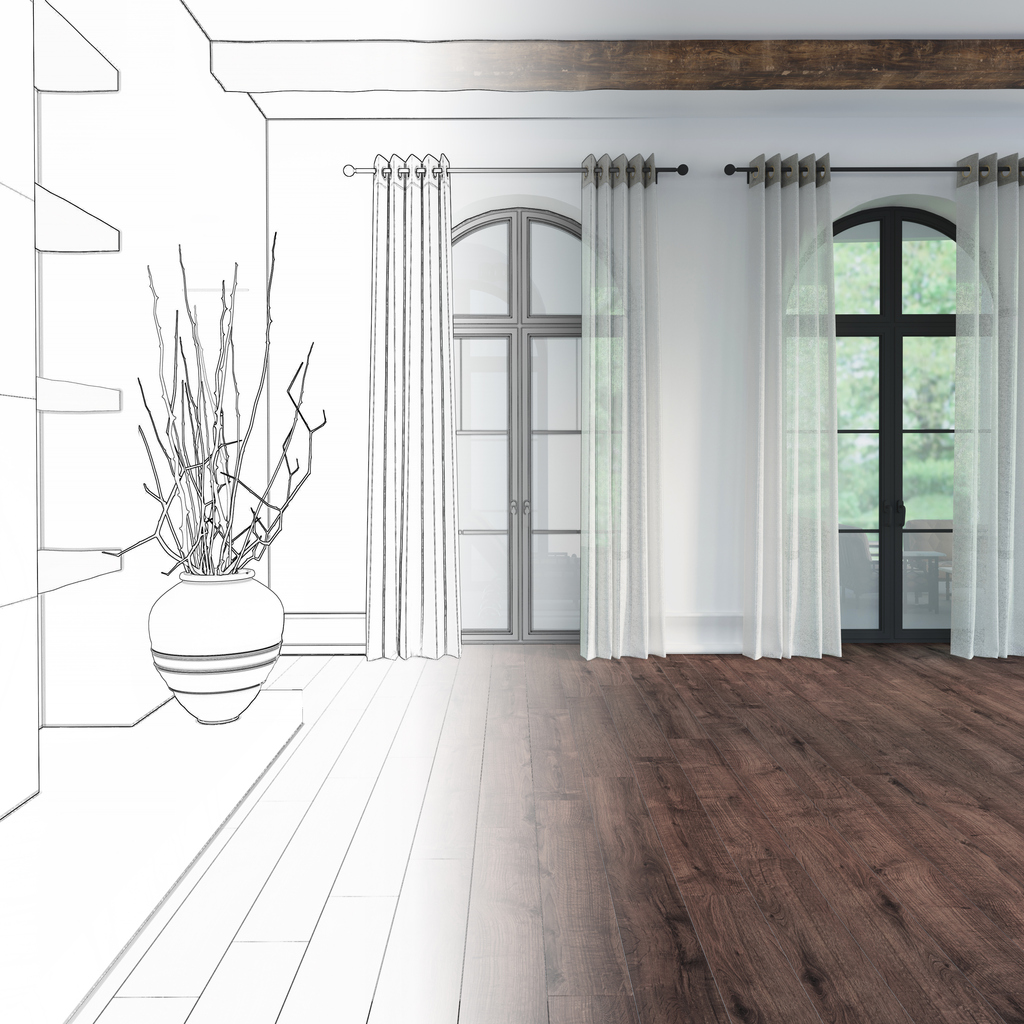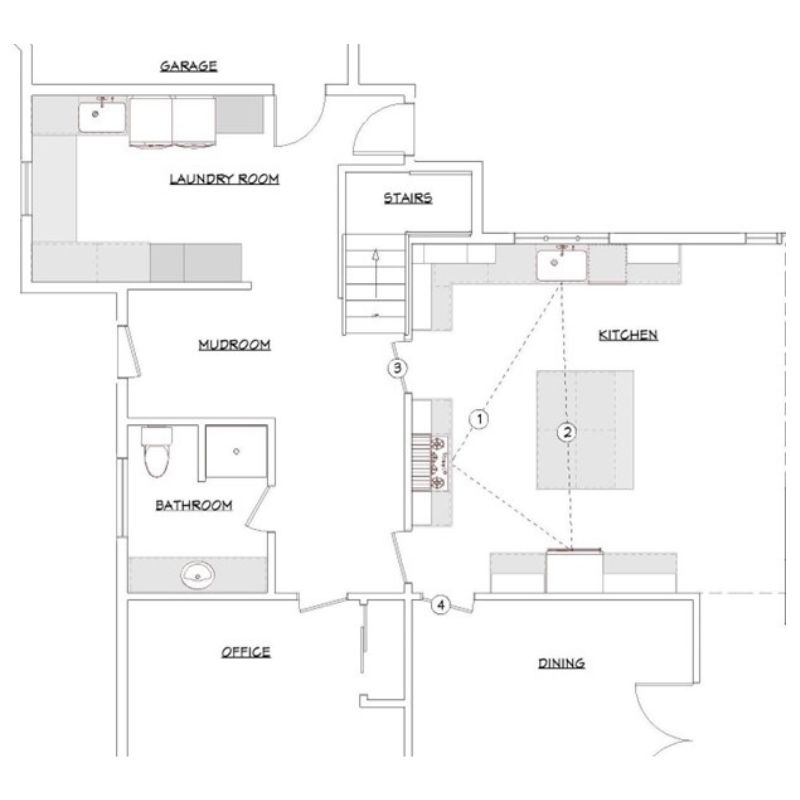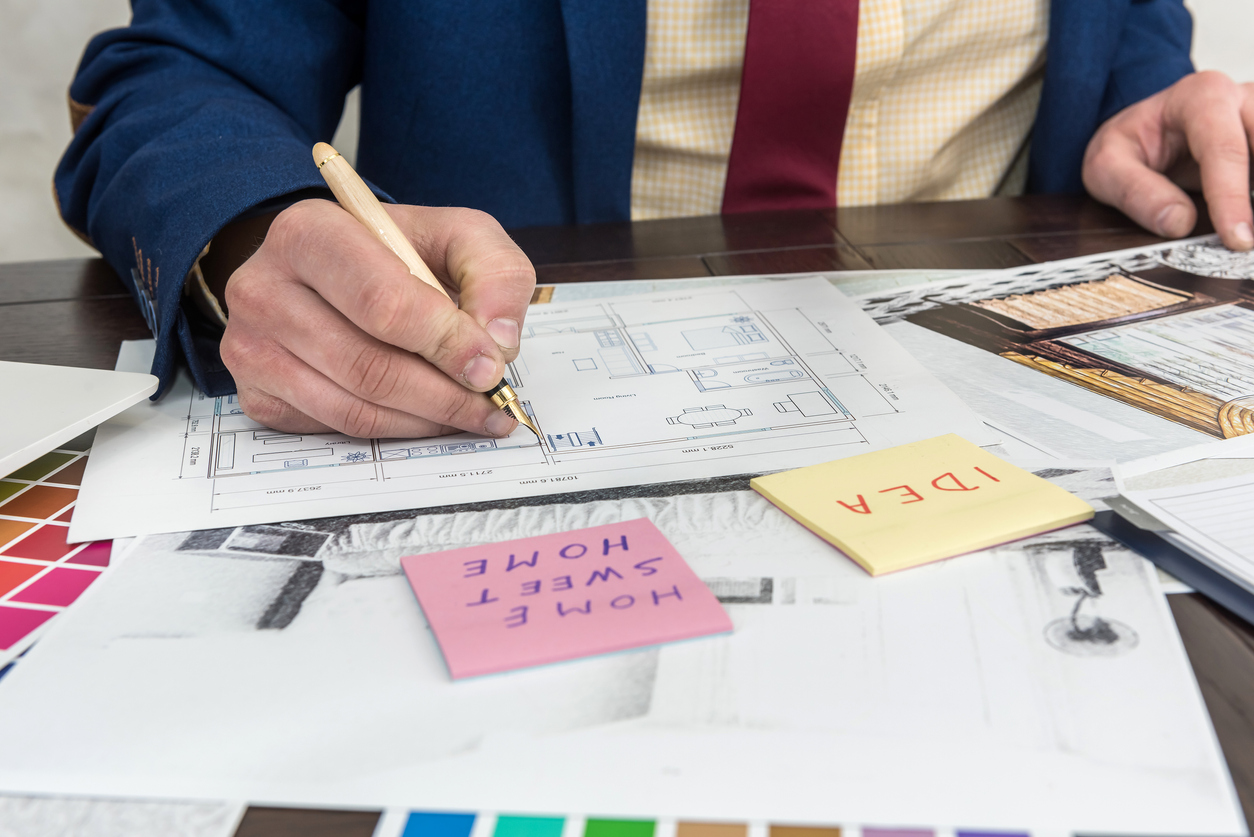.jpg)
Are you dreaming about transforming your home into a sanctuary of style and comfort? If the thought of starting an interior design project fills you with excitement and trepidation in equal measure, then this guide is for you. We will cover the basics of interior design fundamentals, explain how to create your master plan, and guide you through the process of budgeting for your dream space. Let's start your design journey today!
Peeling back the layers of interior design, we find it's much more than a simple equation of selecting paint colors and situating furniture. It's a rich tapestry of elements and principles, thoughtfully woven together to create a space that's not only visually appealing but also functional. It's a dialogue between balance and contrast, rhythm and scale, proportion and unity, and harmony.
Dive deep into the essence of balance. It's an art, an exercise of distributing varying visual weights in a room to create a sense of equilibrium. Picture a grand piano on one side of your living room. To balance it, you could arrange several smaller pieces of furniture on the opposite side. Balance, however, doesn't always imply symmetry. Your space could also embrace asymmetrical balance, where different elements work together in an informal, more relaxed arrangement, bringing a dynamic and contemporary touch to your room. As you explore the concept of balance, keep the function of the room at the heart of your design decisions.
Moving on to contrast, think of it as the spice of your design. It brings in the excitement, the surprise element. Pairing a sleek modern table with antique wooden chairs, combining soft fabrics with rough textures, or juxtaposing dark and light colors are some ways to incorporate contrast.

Rhythm in design is all about creating patterns of repetition and contrast that guide the eye around the room. You can achieve rhythm through color, pattern, texture, or shape. Imagine a room with repeating patterns of a specific color, or the rhythmic feel of a room with a recurring motif in the furniture and accessories.
Scale and proportion deal with the size of objects relative to each other, ensuring everything in the room fits together seamlessly. A massive couch in a tiny room would throw off the proportion, while a tiny lamp on a huge table might seem out of scale.
Lastly, unity and harmony bring all the design elements together, creating a sense of cohesion and completeness. This could mean using a consistent color scheme throughout the house, or using furniture from the same period or style.
Understanding these basic concepts is your first step towards mastering the art of interior design. Each concept is a key to unlocking the potential of your space, transforming it into your dream home.
Embarking on your design journey, the next pivotal step is crafting a comprehensive design master plan. This crucial roadmap should outline every facet of your design project, from pinpointing the overall aesthetic you aspire to achieve to settling on the color scheme that will paint your space with personality. Your master plan should encapsulate every nook and cranny of your design aspirations.
To identify your home interior style, start by exploring different styles and determining which one resonates with you the most. Look at various design magazines, websites, and social media platforms for inspiration. Pay attention to the elements, colors, and patterns that catch your eye. Once you have a general idea of the style you prefer, it's time to paint your canvas. Choose a color scheme that resonates with your chosen style, considering how different hues can dramatically alter the mood and energy of a space.
No master plan would be complete without a well-thought-out furniture strategy. Beyond just selecting pieces that catch your eye, consider the size, functionality, and visual weight each piece will add to your space. Your interior design consulting plan should also encompass the smaller details, including art, accessories, and lighting fixtures that add layers of complexity and interest to a room.
Your design master plan isn't simply a list of items to purchase or tasks to complete. It's a living document that outlines your vision, guides your decisions, and keeps your project on track. While creating it, keep an open mind and allow room for flexibility. Sometimes, the most striking design elements come from unexpected discoveries or sudden bursts of inspiration. Your master plan should serve as a blueprint, but never let it stifle your creativity or prevent you from seizing unexpected opportunities that may arise along your design journey.


.jpg)

It’s crucial to establish clear objectives that will guide your decisions and provide a sense of direction. However, it's important to ensure that your objectives are well-defined and purposeful.
To begin, be specific about the changes you want to make in your living room. Instead of simply aiming to make it more welcoming, specify the exact modifications you desire. Would you like to add more seating? Brighten the room with new lighting or a lighter paint color? Clearly defining your objectives will help you visualize the end result. Additionally, make sure your objectives are measurable. This means setting goals that can be tracked and progress can be measured against. For example, if your objective is to add more seating, set a measurable goal such as adding seating for a specific number of extra people.

Consider the achievability of your objectives as well. Take into account the limitations of your space and adjust your goals accordingly. If adding seating for a large number of people is not feasible, aim for a more realistic number that fits within your available space. The relevance of your objectives is also crucial. Each objective should serve a purpose and contribute to the overall vision of your home. Whether it's accommodating more guests or creating a cozier atmosphere, ensure that your objectives align with your desired outcome. Lastly, establish a timeline for achieving your objectives. Setting deadlines creates a sense of urgency and helps you plan and manage your project effectively.
Remember, setting clear objectives for your interior design project is a vital step towards transforming your space into a tangible reality. Stay flexible and adjust your objectives as needed throughout the journey, as the process is just as important as the final result in the world of interior design.
Entering the world of budgeting might not seem as thrilling as selecting paint colors or shopping for that perfect accent piece, but it is a critical part of the interior design process. The journey to creating your dream space shouldn’t be clouded by financial stress, and a well-planned budget is your safeguard against such worries.
Begin with a comprehensive inventory of every potential expense that your design project might entail. This list should not just include the obvious items like furniture and materials, but also factor in the cost of labor if you plan on hiring professionals for certain tasks. Don't forget to account for those unforeseen costs that almost always creep up in a project. Whether it's a sudden plumbing issue or the perfect antique mirror that's a little over your initial price range, a contingency fund will keep you prepared for such surprises.
Once your list is complete, it's time to establish priorities. It's often tempting to splurge on a designer sofa or luxurious wallpaper, but remember to align your spending with your objectives. Perhaps, investing in a good quality, comfortable couch makes sense if your goal is to create a more welcoming living room. On the other hand, if the wallpaper does little to enhance the overall design, it might be worth considering more budget-friendly options for your interior design project.
Budgeting is more than just crunching numbers. It's a strategic tool that allows you to make informed decisions and manage your resources efficiently. Embrace it as a guiding star, rather than an obstacle, on your path to creating a beautifully designed home. Remember, with creativity and thoughtful planning, even a modest budget can produce results that are nothing short of spectacular.
If you're seeking interior design consulting in Sacramento CA, schedule a call now to bring your vision to life.
